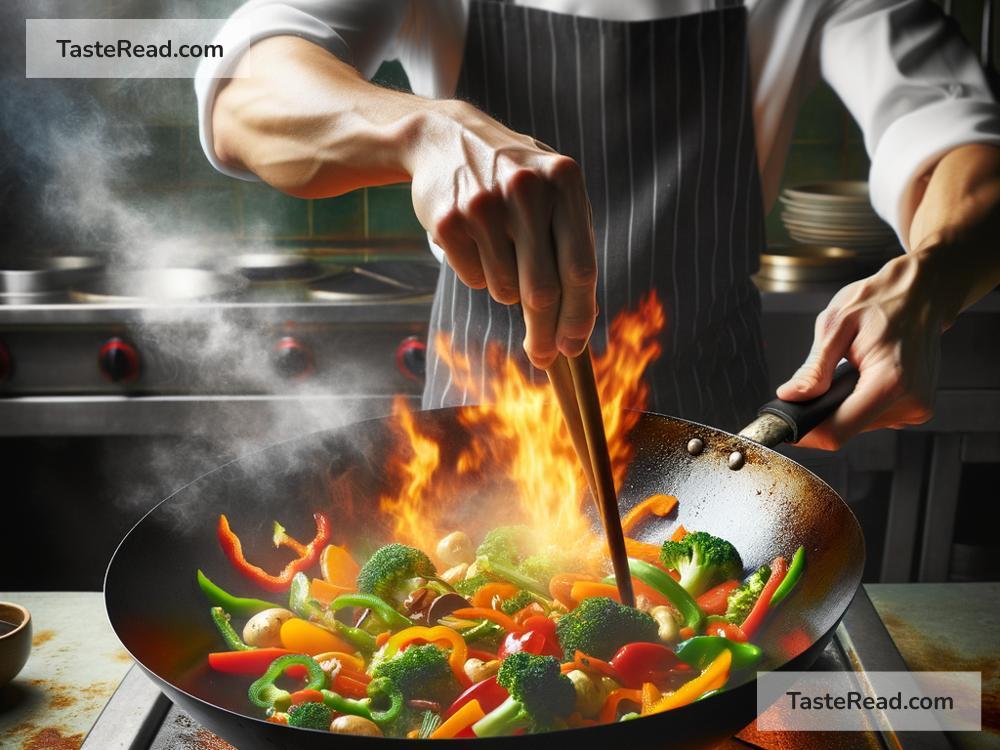Title: Mastering the Art of Cooking with a Wok for High-Heat Dishes
Cooking with a wok isn’t just a technique; it’s an art form that once mastered, can elevate your cooking to new heights. The wok, with its distinct shape and ability to handle high temperatures, is a versatile tool in the kitchen. Whether you’re aiming to whip up a quick stir-fry, deep-fry your favorite snacks, or steam veggies and dumplings, the wok has got you covered. Today, I’ll guide you through mastering the art of cooking with a wok for high-heat dishes, making you a wok wizard in no time.
The Magic Begins with the Wok
First thing’s first, choosing the right wok is crucial. Traditional woks are made of carbon steel, which heats up quickly and evenly, ensuring your food cooks perfectly. These woks also have a round bottom, ideal for the high-heat, quick-cooking techniques often used in Asian cuisine. However, if you have an electric or induction stove, you might opt for a flat-bottom wok for better stability and heat distribution.
Seasoning Your Wok: The First Step to Flavor
Before you start cooking, seasoning your wok is a must. This process helps create a non-stick surface and adds depth to your dishes’ flavors. To season a new carbon steel wok, scrub it with hot water and soap (this is the only time you’ll use soap on it), dry it, and then heat it on high until it’s smoking. Then, coat it lightly with oil, swirling to cover the surface, and heat until it smokes again. Do this a few times, and your wok will be ready to go.
High-Heat: The Secret to Stir-fry Success
One of the wok’s superpowers is its ability to handle high heat, making it perfect for stir-frying. The key to a great stir-fry is preheating your wok until it’s almost smoking. Then, add oil (ones with high smoke points like peanut or canola) and swirl to coat. This method locks in flavors, textures, and nutrients, giving you that signature crisp-tender bite in every dish.
Mastering the Wok Toss
Forget the spatula; the iconic wok toss is not just for show. It’s an efficient way to move and flip your ingredients, ensuring they cook evenly without overcooking. To do it right, push the wok forward and then pull it back quickly, letting the ingredients jump. It might take a bit of practice, but once you get the hang of it, you’ll cook like a pro, and maybe even impress a few guests.
The Role of Ingredients and Preparation
Cooking with a wok is fast, and there’s no time to chop veggies or measure out sauces once you’ve started. So, having all your ingredients prepped and ready to go (a technique called “mise en place”) is essential. Cut your veggies into bite-size pieces for quick and even cooking, and have your meats thinly sliced and your sauces mixed.
Balancing Flavors Like a Master
High-heat dishes cooked in a wok are all about bold flavors. Understanding how to balance these – salty, sweet, spicy, and sour – is key. For instance, soy sauce adds saltiness, while a dash of sugar can bring sweetness. Ingredients like chili peppers or Szechuan peppercorns introduce heat, and a splash of rice vinegar can add a tangy note. Adjust and taste as you cook to find your perfect balance.
Cleaning and Caring for Your Wok
After all the cooking is done, cleaning and maintaining your wok properly ensures it lasts a lifetime and continues to bring its flavor magic to your dishes. Once cooled, rinse your wok with hot water and a sponge (no soap), dry it thoroughly over low heat on your stove, and then apply a thin layer of oil to protect the surface. This simple routine keeps your wok seasoned and prevents rust.
Conclusion
Mastering the art of cooking with a wok opens up a world of culinary possibilities. From searing stir-fries to succulent steamed dishes, the wok is your gateway to exploring and enjoying high-heat cooking. Remember, like any art, it requires patience, practice, and passion. So, grab your wok, fire up the stove, and start experimenting. Embrace the mistakes, revel in the successes, and most importantly, enjoy the delicious journey of becoming a wok master.


